From helping a horse to relax, to improving balance and suppleness, making it straight or teaching it to understand the inside leg to outside rein, there are endless ways to use the shoulder-in to better train your horse.
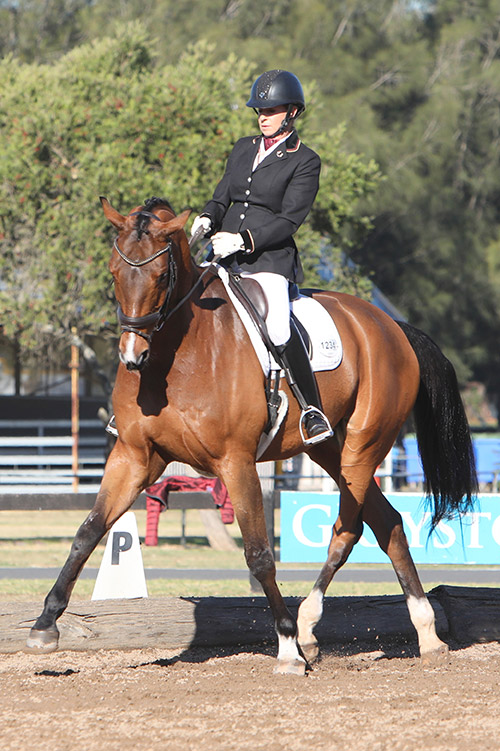
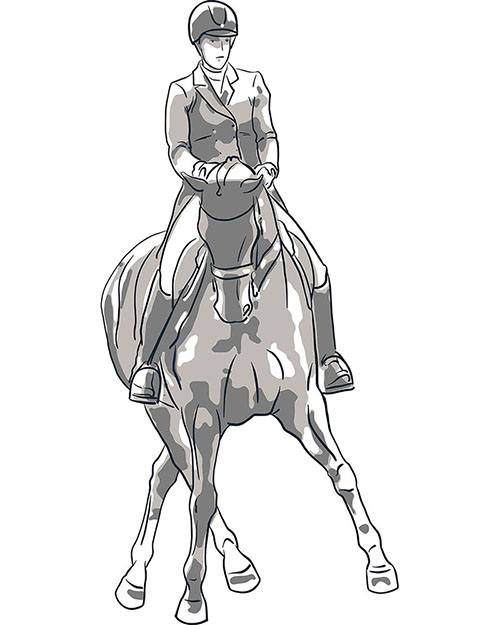
Dressage is training for suppleness, balance and obedience. So, dressage training helps prepare any horse for a good and useful life. As Tom Roberts said, a well-trained horse has a good life.
One of the most useful exercises to improve balance and suppleness is the shoulder-in. Invented by François Robichon de La Guérinière, the importance of the shoulder-in has been highlighted by recent scientific studies that show that horses will become more relaxed when you bend their bodies by putting them into the shoulder-in. You can read a previous article about this here (‘A Relaxed Horse is a Happy Horse’, Equestrian Life July 2020). But now I would like to give you some examples of how you can use the shoulder-in in a range of different exercises to help the gymnastics of your horse, whatever your discipline.
When the horse is in shoulder-in, the inside hind leg of the horse is placed well under its body, bending all three joints and therefore carrying more weight, and building the horse’s capacity for balance and collection. This is one of the key advantages of the shoulder-in. We use the shoulder-in to train suppleness and bend, and we use it to help the horse understand the inside leg to outside rein aids.
It is also a fundamental exercise to help make a horse straight. This may seem counter-intuitive that we use bending to make the horse straight, but you should always move the shoulder in front of the hind leg to make a horse straight. Of course, horses are just like us in that they will tend to have a stiff side and a softer side. The stiff side is likely to feel hollow whereas the more supple side will stretch more easily. The shoulder-in is a wonderful tool to make the horse stretch the hollow side so he becomes more symmetrical and accepts the outside rein. This is important whatever the discipline you are practising.
There are an infinite number of ways to use the shoulder-in to better train your horse. It does not need to be limited to the lines we use in the dressage tests, namely shoulder-in along the long side, and later in Inter I, shoulder-in along the centreline. I will give you some suggestions on how you can use the shoulder-in as an exercise.
FIRSTLY, YOU MUST TEACH THE SHOULDER-IN
Start by teaching him to yield sideways to the leg aids. Often the horse will have been taught the turn on the forehand in-hand when being broken in, so you can start with this exercise. Then progress to the leg-yield under saddle. Make the right thing easy by riding a very small circle and then allowing the horse to do something easier by leg-yielding out of the small circle onto a bigger circle. The outside rein leads the horse out, in an early experience of inside leg to outside rein. The horse is bent around the inside leg. Progress this by doing the leg-yield from the centreline out to the wall.
When your horse understands this and can find his balance easily in it, you can start the shoulder-in. Start with a small circle, which may be in the corner. Continue one step past the line of the long side so the shoulder is on an inside track. The outside rein then leads the horse along the wall while the inside leg keeps the impulsion and bends the horse around the inside leg. The outside leg guards the hindquarter from going out. The inside rein initially holds the position of the neck, but later when the horse can balance in self-carriage, the inside rein may be given softly.
23 EXERCISES
The shoulder-in can be ridden along the long side (1), or on a circle (2), or in the corners (3). You do not need to stay in it a whole long side. In fact, if you lose rhythm or impulsion or bending, it’s better to ride into a circle and get the bending and the impulsion and rhythm into the trot and do the shoulder-in again. A shorter number of good steps is better than trying to do a lot of steps.
Quite often a rider will notice that they feel as if they need to pull the left rein when riding to the left, because the horse seems to want to bend to the outside. Sometimes the rider will say that the horse pulls the left rein. Of course, it takes two to pull, so the rider is pulling too. I understand this is often due to the horse being reluctant to take a contact on the right rein. The right side is stiff and hollow. The horse does not want to take the outside rein contact and stretch the right side. Often these horses will accept the left outside rein contact more easily as the left side is more supple and stretches more easily. Riding the shoulder-in along the wall will help the horse to stretch the right side and accept the outside contact. In this situation, once again it is counter-intuitive that the rider should not let the horse determine that the rider pulls the inside left rein, but should get the horse to give the ribs over to the left leg. This kind of stiffness can be very prominent in horses off the track as they may not have been ridden in a way that makes them symmetrical.


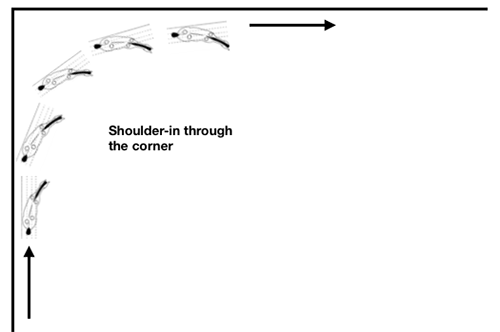

“We use the shoulder-in to
train suppleness and bend.”
You don’t need to stay in the shoulder-in for a whole long side. Try to keep the rhythm absolutely regular and go from shoulder-in to a small circle, and back to shoulder-in (4). When you are confident, put the shoulder-in along the centreline or a quarter-line where you do not have the wall for support (5).
You can then start to play with the length of stride. Keep the angle and the rhythm the same and make the steps longer and shorter. You can do this on a straight line (6) (the long side) or on a circle (7). Be aware of the balance. You want him to be able to lengthen and shorten the stride but keep his balance in a nice uphill way. So don’t ask too much too soon, just play with it like you are playing a concertina. Step by step. Slowly over time (a year or two) this can be an exercise that helps the horse find the very collected balance required for the short steps and half-steps that precede the piaffe and passage. This is a great exercise to do on a circle (8) as you can keep opening and shortening it without the interruption of a corner.
Eventually you can (9) use the shoulder-in to help the horse improve the piaffe and passage. It will help him to learn to put in more energy, but not canter. One of the great challenges of higher-level dressage is to achieve a relaxed piaffe and passage where a supple horse bounces in an elastic way into the high collection, rather than a tense, snatchy passage that is more prone to being irregular. Of course, one of the problems is that the rider might be saying with the aids “more energy”, “don’t go forwards”, which may seem to be two contradictory requests for the horse, leading to tension. As we know, the shoulder-in helps the horse to be relaxed. You can use it at almost any time to help the horse relax.

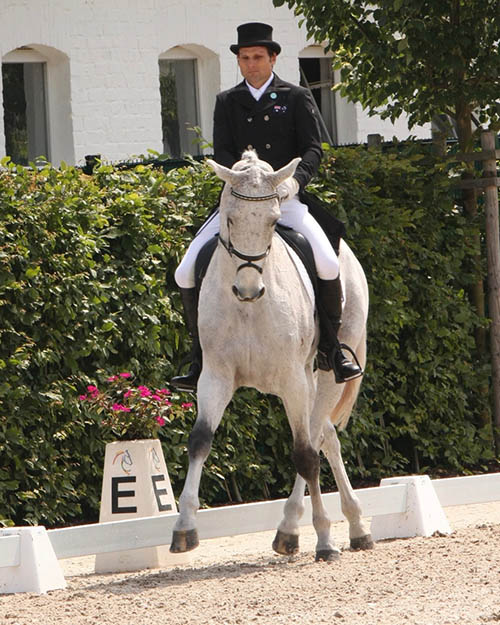
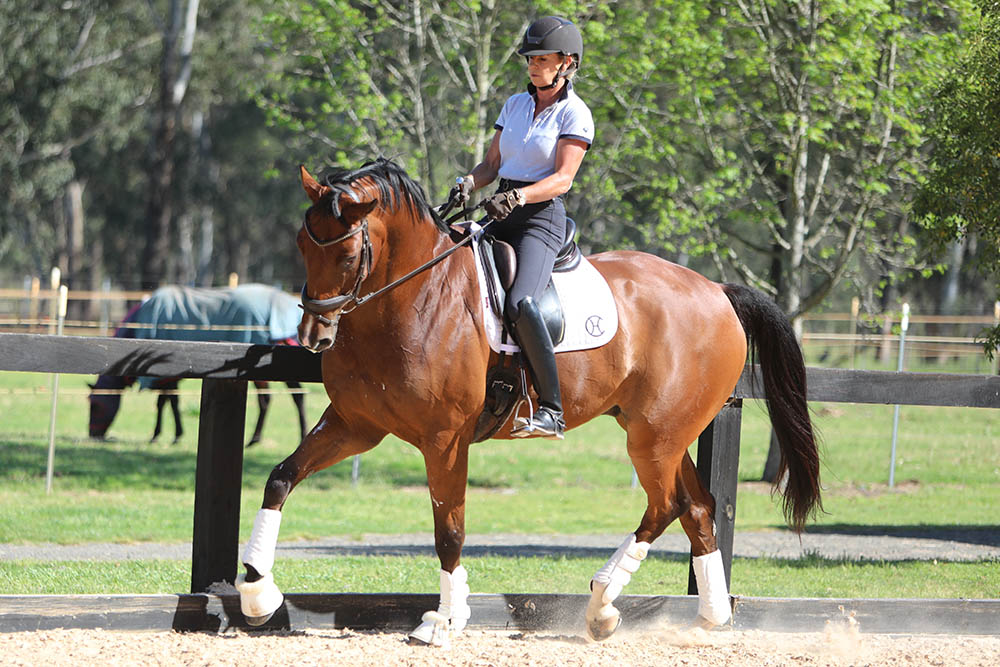
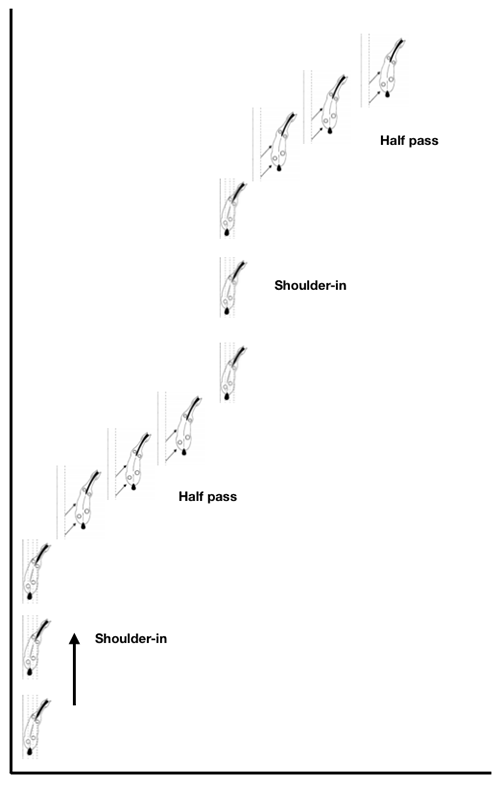
“It is also a fundamental exercise
to help make a horse straight.”
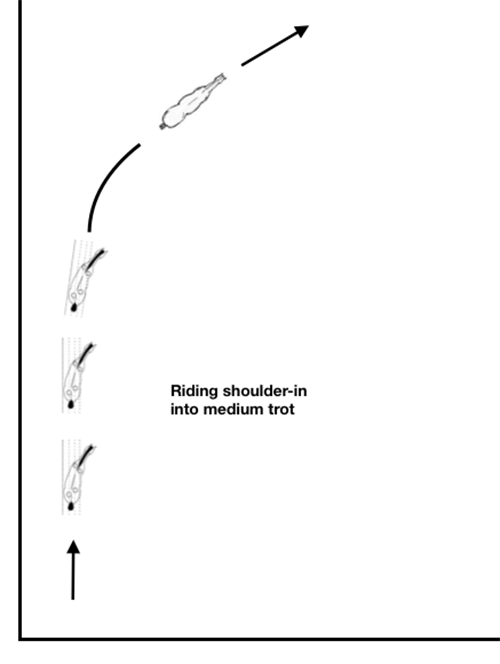
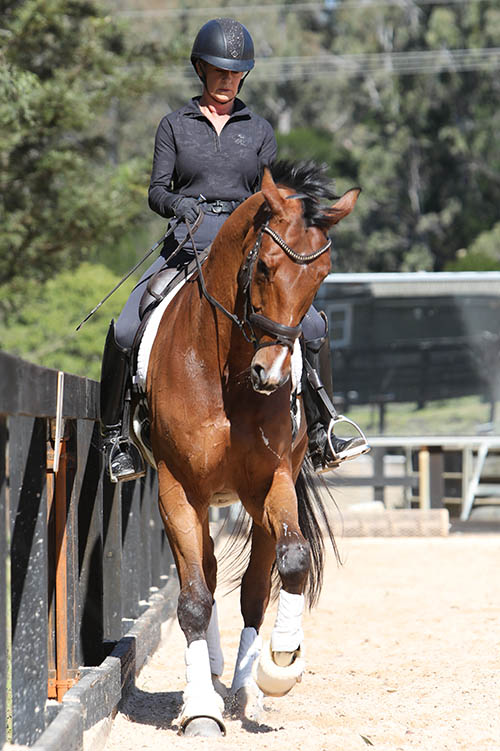
The shoulder-in is the preparation for the half-pass (10); in fact, when you watch the professional riders ride the half-pass, even in the Grand Prix you will see them put the horse in shoulder-in before they go sideways into the half-pass, even if it is just for a moment. A lovely exercise to develop balance is to go shoulder-in for a few steps, then half-pass and back to shoulder-in and back to half-pass. (11)
Of course, the trot should stay in the same rhythm as these transitions are ridden. When this is easy you can extend it by doing half-pass left, shoulder-in right, then the half-pass right and then shoulder-in left (12). This of course becomes the counterchanges of hand known as the “zigzag”. You just ride fewer steps of the shoulder-in as you change the hand (13)
To improve the lengthening at trot you can start with a shoulder-in, to get the engine of the horse, (the hind legs), underneath the body of the horse so he can really push to make the longer steps of the medium and extended trot. Ride the shoulder-in along the wall, and then ride straight forwards on the diagonal in the medium trot (14). Alternately you can use the medium trot to improve the balance and impulsion of the shoulder-in by riding a few steps of medium trot and put the shoulder-in into it, and ride out in medium trot (15).
The shoulder-in can also be used in the preparation for the canter transition (16). Once again, the hindquarter is in a great position to make a powerful balanced transition. One of the guiding principles of training is to make the right thing easy and the wrong thing difficult. It is hard for the horse to take the wrong canter lead if he is in shoulder-in. You may notice in the Grand Prix test there is a transition from passage to canter. Often riders will prepare the transition with a few steps of shoulder-in, or take a softer shoulder-fore position, at passage to ensure the horse keeps his balance and takes the correct canter lead. Of course, this preparation for the canter transition will help lower-level horses and jumpers – in fact every horse – to find the correct lead in good balance.
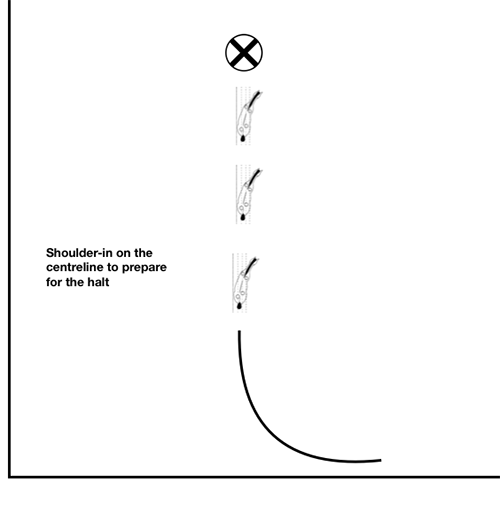
“The shoulder-in helps
the horse to be relaxed.”

Shoulder-in can help you prepare for the halt, too, both to promote straightness and good balance in the halt. Go up the centreline in a small, collected shoulder-in and collect a little more before the halt. If he anticipates the halt, you can use the shoulder-in to keep control and not allow him to halt early. This is suitable for trot (17) and canter (18). When your horse understands this, then in the test you can use the tiniest shoulder-in, just a tiny bend and angle, to help him know not to halt. The shoulder-in will help him keep an uphill balance and not fall into the halt on the forehand. The judges won’t even notice the shoulder-in.
Another great straightening exercise is to put him in shoulder-in and then flip the bend into renvers (19). This is pretty hard to do at canter (20), but like most things that are hard, it can be really beneficial to help develop straightness and suppleness. It can also be used in the test, just softly, to correct crookedness, even on the centreline.
The shoulder-in can be used in a more advanced horse to develop the pirouettes. Ride a circle and ride the shoulder-in on the circle (22). Gradually over time you can make the circle smaller. You can ride a small square with the corners in shoulder-in so he balances in the turning (23).
I am sure you can see that actually you can use the shoulder-in to improve the balance, suppleness and obedience of any horse, at any level. You can invent your own exercises. Have fun. EQ
Read more by Dr Kerry Mack:
Understanding Your Horse’s Inner Thoughts – Equestrian Life, February 2021 issue
Building Better Relationships – Equestrian Life, January 2021 issue
Whipping Up Controversy – Equestrian Life, December 2020 issue
The Importance of a Trusting Relationship – Equestrian Life, November 2020 issue
Welcome to Kindergarten for Foals – Equestrian Life, October 2020 issue
The Carrot or the Liquorice? Positive Reinforcement – Equestrian Life, September 2020 issue
Submission or Stress? Something to Chew On – Equestrian Life, August 2020 issue
A Relaxed Horse is a Happy Horse – Equestrian Life, July 2020 issue
The Literate Horse Rider – Equestrian Life, June 2020 issue
Why Horses Love Ingrid Klimke – Equestrian Life, May 2020 issue

